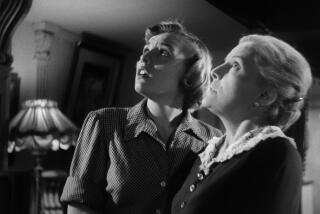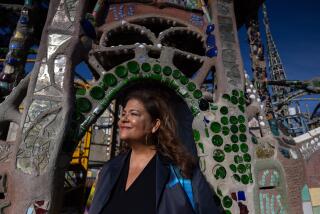History Is Main Street as Well as the Clash of Armies : Preservation: There is nothing mysterious or effete about keeping links to our past.
The term preservation makes me a little uneasy. It has become such a buzz-word that we tend to forget that it describes a simple activity that we all engage in, and for some very simple reasons.
For example, when I lived in Charleston, S.C., my neighbor was a real Charleston lady. In the dining room of her 18th-Century house was an antique silver tea service, of which she was extremely proud. She would show it off to her guests and, on very special occasions, even pour tea from it. My neighbor held on to her tea set--she preserved it--simply for its beauty.
Unlike my neighbor, my grandparents in Plainview, Tex., certainly did not keep driving their obsolete Model T Ford well into the 1940s because it was beautiful. They held on to their car--they preserved it--because it did what they expected it to do, which was to take them where they wanted to go with a minimum of bother.
My sister, on the other hand, has kept a corsage she wore to a dance among the pages of her high-school scrapbook. She had held on to her faded flower--she has preserved it--not because it is beautiful (it is not) and not because it works (it is not good for anything, really).
Rather, she has preserved her corsage because it reminds her of an event that she does not want to forget. It is a link with a part of herself that she wants to keep.
When you strip away all the rhetoric, preservation really means just having the good sense to hang on to something because it is good to look at, because it works, because it links us with a past that we need to remember.
Unfortunately, our interpretation of the past pays scant attention to the broad and ordinary flow of commonplace human experience. History focuses instead on politics and war, the cataclysmic and the unique. The places where we live and work, the aspects of everyday life that affect us most deeply, are absent in the history most of us are taught.
The 19th-Century English artist and critic John Ruskin once wrote, “Great nations write their autobiographies in three manuscripts--the book of their deeds, the book of their words and the book of their art. Not one of these books can be understood unless we read the two others, but of the three, the only trustworthy one is the last.”
Without a doubt, America’s “ordinary” communities are important entries in the book of the nation’s art. If we fail to preserve this art--the simple buildings and unencumbered landscapes that our forefathers left for us--we break the partnerships among the past, present and the future and lose touch with who we are and what we want to be. However, when we save the tangible evidence of our past, we strengthen the perpetual partnership that makes for orderly growth in the life and appearance of our communities.
We make it possible for our children to say: “See! This our fathers did for us: They saw the beauty of this landscape and the worth of these buildings, they protected and nurtured them, and they passed them on to us--alive.”
More to Read
The biggest entertainment stories
Get our big stories about Hollywood, film, television, music, arts, culture and more right in your inbox as soon as they publish.
You may occasionally receive promotional content from the Los Angeles Times.










